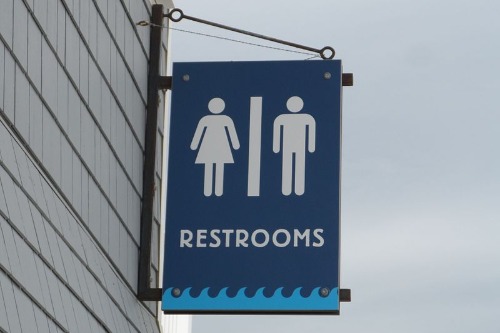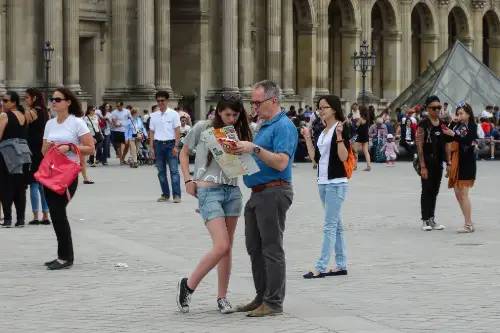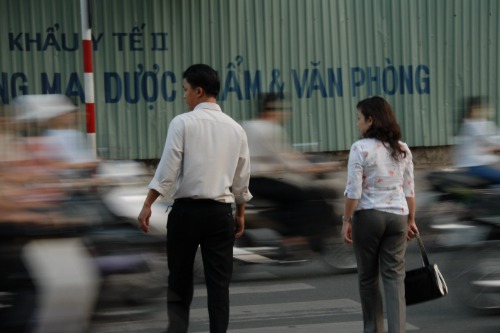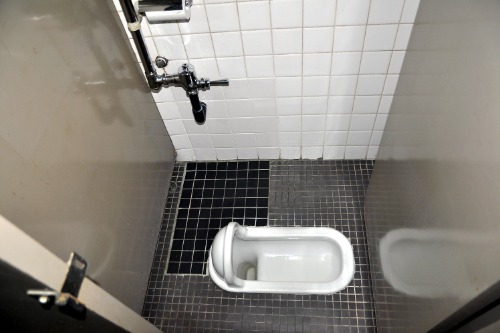1. Expecting Free Refills Everywhere

In the U.S., free refills are a given at most restaurants, The New York Times explains, but in many other countries, they’re unheard of. Ordering a soda in Europe, for example, usually means paying for every single glass, which can lead to sticker shock. Some travelers end up confused or even frustrated when they can’t get another Coke without an extra charge. It’s a small thing, but it really highlights how Americans are used to unlimited drinks.
Even when free refills are available abroad, they often come with a catch—like only applying to certain drinks or requiring a specific meal purchase. In some places, restaurants even frown upon lingering too long with just one drink. This makes Americans’ tendency to sit and sip for hours a bit unusual. It’s one of those little differences that can cause unexpected travel hiccups.
2. Tipping Way More Than Expected

Tipping is second nature in the U.S., where servers rely on tips to make a living, The Guardian reports, but that’s not the case everywhere. In countries like Japan, leaving extra money can actually be seen as rude, implying that the staff isn’t paid well. In places like Australia and much of Europe, tips are appreciated but nowhere near the 20% standard Americans are used to. Some travelers end up overpaying without realizing it’s unnecessary.
On the flip side, skipping the tip where it’s expected—like in some tourist-heavy areas—can cause problems too. Americans often struggle to figure out when to tip and how much, leading to awkward moments. Some even insist on tipping when told it’s not needed, confusing locals. It’s a habit that can make Americans seem overly generous or just out of touch.
3. Being Loud Without Realizing It

Americans have a reputation for being enthusiastic, expressive, and—let’s be honest—loud, according to the University of Delaware. In quieter cultures, like Japan or parts of Scandinavia, a group of chatty American tourists can turn heads fast. Many people abroad tend to speak in lower tones in public spaces, especially on public transportation. But for Americans, booming voices and laughter are just part of normal conversation.
This cultural difference can sometimes lead to unwanted attention or even complaints. In some cases, locals might assume Americans are being rude when they’re really just excited. Even in restaurants, American travelers often stand out for their animated discussions. It’s not meant to be disruptive, but it’s definitely noticeable.
4. Asking for Ice in Everything

According to Reader’s Digest, to an American, a drink without ice is just sad, but in many countries, ice-cold beverages aren’t the default. In Europe, for example, water is often served at room temperature, and sodas might come with just a cube or two. This leads to many Americans repeatedly asking for extra ice, sometimes confusing or annoying their servers. In some places, people even believe that too much ice is bad for digestion.
In parts of Asia and South America, ice might be avoided due to concerns about water quality. Americans used to clean tap water don’t always realize this and might get odd looks when insisting on ice. Some travelers even try to explain why drinks are “better” with ice, which doesn’t always go over well. It’s one of those tiny things that can make Americans seem oddly demanding.
5. Expecting Big Portions Everywhere

The U.S. is famous for its massive food portions, but that’s not the norm in most of the world, according to The Sydney Morning Herald. Many Americans are surprised when their meal abroad looks, well, small. In places like France and Japan, portions are designed to be just enough, not oversized. Some travelers assume they’ve been shorted and even complain, not realizing it’s intentional.
In some cases, Americans try to order extra sides or double portions to compensate. This can make them stand out, especially in cultures that prioritize balance over excess. Some countries also frown upon wasting food, making American-style leftovers an unusual concept. It’s a reminder that what feels “normal” at home isn’t universal.
6. Wearing Super Casual Clothes Everywhere

Americans love their comfort, and that often means T-shirts, sneakers, and sweatpants, even while sightseeing. But in many parts of Europe and Asia, people tend to dress more formally in public. This can make American tourists easy to spot, especially when wearing athletic gear outside of the gym. In some places, casual dress is even seen as disrespectful in churches or nice restaurants.
While no one expects travelers to dress to the nines, locals might raise an eyebrow at flip-flops in a city or yoga pants at dinner. Some American tourists are surprised when they get turned away from certain places due to dress codes. Even little things, like wearing baseball caps indoors, can seem odd to others. It’s a cultural difference that can make Americans seem underdressed.
7. Expecting Public Bathrooms to Be Free and Plentiful

In the U.S., public restrooms are easy to find and usually free, but that’s not the case in much of the world. Many European cities charge a small fee to use public toilets, which can catch American travelers off guard. Some people even refuse to pay out of principle, not realizing it’s completely normal there. Others get frustrated when they can’t find a restroom at all.
In places like Japan, public restrooms are available but can have unfamiliar high-tech features. Meanwhile, in some countries, squat toilets are still common, which can be a shock to Americans. The lack of easily accessible restrooms often leads to awkward moments for unprepared travelers. It’s a reminder to always carry some change—just in case.
8. Assuming Everyone Speaks English

English is widely spoken around the world, but assuming everyone knows it can come off as arrogant. Some American travelers get frustrated when locals don’t understand them, rather than trying to learn a few basic phrases. Speaking louder or slower in English doesn’t always help and can even seem rude. Even in tourist-friendly spots, a little effort to speak the local language goes a long way.
Many countries appreciate when visitors at least try to say “hello” or “thank you” in their language. It shows respect and can make interactions much smoother. Some Americans are great about this, while others rely entirely on English. It’s an easy habit to change, but one that can make a big difference.
9. Getting Annoyed at Slow Service

In the U.S., restaurant service is fast-paced, and waitstaff check in often, but that’s not standard everywhere. Many cultures see dining as a relaxed experience, and meals can take hours. Some Americans mistake this for bad service and get impatient, not realizing it’s just a different approach. In places like France and Italy, rushing through a meal is actually seen as strange.
Waiters in many countries won’t bring the check until it’s requested, which can leave Americans waiting longer than expected. Some travelers even wave down staff or complain about the “slow” service. But in reality, dining abroad is meant to be savored, not rushed. Adjusting expectations can make meals more enjoyable.
10. Walking Into Traffic Like They Own the Road

In many American cities, pedestrians have the right of way, and jaywalking is either legal or rarely enforced. This leads some American travelers to step into the street assuming cars will stop—but that’s not how things work everywhere. In places like Italy, Vietnam, or Egypt, drivers expect pedestrians to be alert and move quickly. Hesitating in the middle of the street or assuming cars will yield can be dangerous.
Some Americans are shocked when they see locals confidently weaving through busy intersections without traffic lights. In some countries, jaywalking is a serious offense, and tourists can actually get fined for crossing at the wrong spot. Meanwhile, in places with chaotic traffic, acting unsure can make things worse. It’s one of those cultural differences that can turn a simple walk into an adventure.
11. Talking to Strangers Like They’re Old Friends

Americans are known for being friendly and striking up conversations with just about anyone. In some countries, though, this level of openness can seem odd or even intrusive. While small talk is common in the U.S., in places like Germany or China, people don’t typically chat with strangers unless there’s a reason. This means a casual “How’s your day going?” might get a confused look instead of a warm reply.
Even smiling too much at strangers can come across as unusual in certain cultures. Some Americans don’t realize that their natural friendliness can be misinterpreted as overly familiar. This is especially true in countries where personal space and privacy are valued more strictly. While being outgoing isn’t a bad thing, adjusting to local social norms can help avoid awkward moments.
12. Complaining About Lack of Air Conditioning

Americans are used to blasting the AC at the first sign of heat, but in many parts of the world, that’s not the norm. In Europe, for example, air conditioning is often limited, and many older buildings don’t have it at all. Some American travelers struggle to sleep in hotel rooms that are warmer than they’d expect. Others complain loudly about the lack of AC, not realizing that locals are just used to it.
In many cultures, fans and open windows are preferred, and AC is seen as wasteful or even unhealthy. Some people believe that too much artificial cooling can cause colds or other health issues. Americans asking for air conditioning in every restaurant, train, or shop can seem odd to locals. It’s one of those habits that highlights just how different comfort standards can be.
13. Freaking Out Over Unusual Toilets

American travelers can have some of their biggest culture shocks in the bathroom. Whether it’s squat toilets in Asia, bidets in Europe, or high-tech toilets in Japan, unfamiliar restroom setups can throw people off. Some Americans get visibly uncomfortable or even refuse to use certain facilities. Others struggle with things like paying for toilet paper or figuring out how to flush without a lever.
Bidets, in particular, tend to confuse Americans who have never used one. Meanwhile, squat toilets can feel like a challenge for those who’ve only ever used Western-style seats. Some travelers even take pictures or make jokes, not realizing how normal these setups are for locals. It’s a reminder that even the most basic parts of daily life can vary wildly from country to country.


